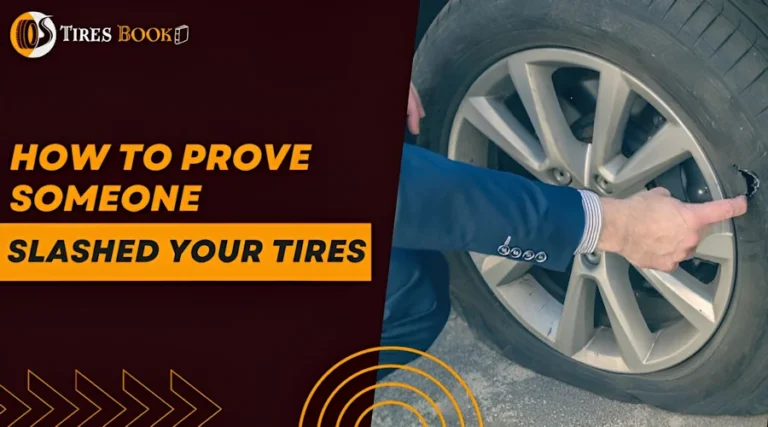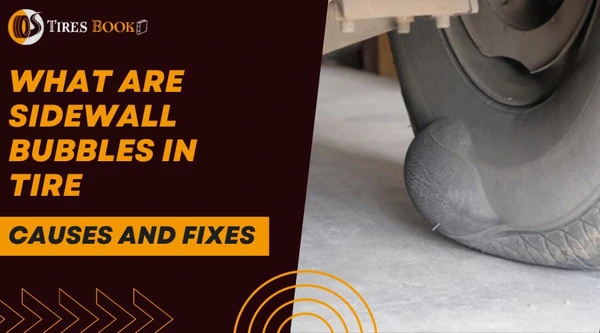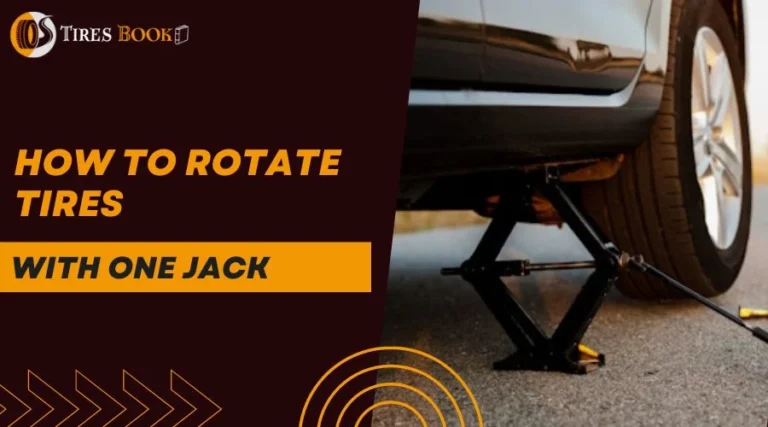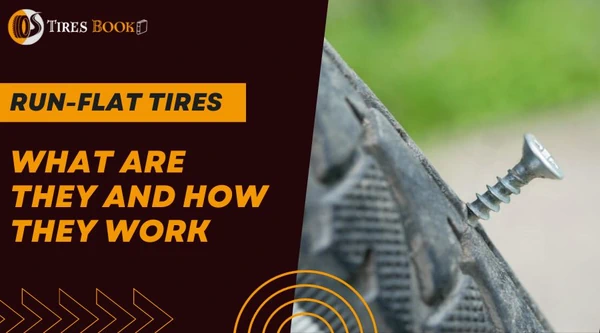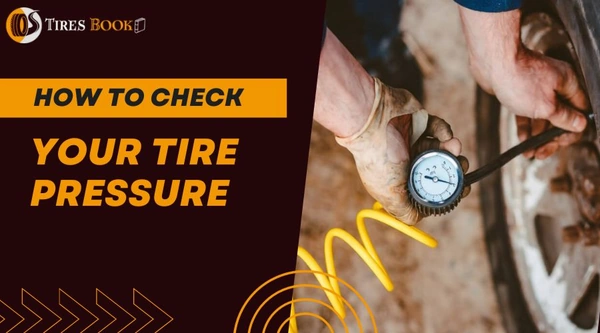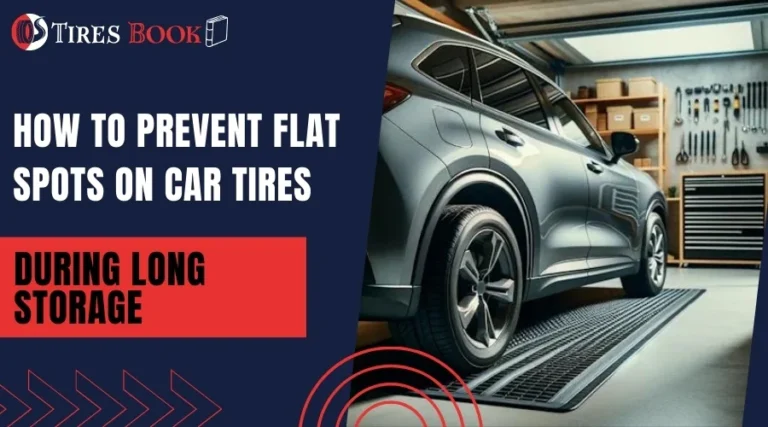Cracked tires can be a significant headache, impacting both your vehicle’s safety and performance. Understanding how to identify, fix, and prevent tire cracks is vital for any car owner. This article offers a comprehensive guide to address these issues effectively.
Table of Contents
What Causes Cracks In Tires?
Several factors contribute to tire cracking:
- Long periods of disuse and aging
- Extreme temperatures and humidity
- Poor maintenance
- Low-quality materials
- Improper inflation
- Exposure to ozone
Long Periods of Disuse and Aging
Tires naturally degrade over time. Aging affects the rubber composition, making it less elastic and more prone to cracking. The process is accelerated if a vehicle remains unused for extended periods.
When tires are not in motion, the distribution of essential protective compounds, such as antioxidants and oils, is hindered. These compounds, which help keep the rubber flexible, can evaporate or leach into the ground, leaving the tires more susceptible to dry rot and cracks.
Extreme Temperatures and Humidity
Tires are significantly affected by temperature fluctuations. In cold conditions, rubber becomes rigid and dries out, increasing the likelihood of cracks.
Conversely, high temperatures cause heat fatigue in tires. The intense heat and UV exposure break down the chemical bonds in the rubber, leading to a loss of waxes and oils.
This degradation process leaves the tires vulnerable to cracking. Humidity also plays a role, as it can exacerbate these temperature effects.
Poor Maintenance
Regular tire maintenance is crucial for prolonging their lifespan. Neglecting to clean and inspect tires regularly can lead to an accumulation of debris and chemicals on the tire surface, which can contribute to the deterioration of the rubber.
Additionally, failure to rotate the tires timely results in uneven wear and puts extra stress on the rear tires, leading to cracks.
Low-Quality Materials
The quality of the rubber and other materials used in tire manufacturing plays a significant role in their susceptibility to cracking.
Low-quality tires made with inferior materials are more likely to suffer from faster wear and tear, including cracking. This is because cheaper materials may not withstand the rigors of road use and environmental exposure as effectively as higher-quality ones.
Improper Inflation
The importance of maintaining the correct tire pressure cannot be overstated. Over-inflated tires are more likely to experience stress on the walls, which may lead to bulging and cracking.
Under-inflated tires, on the other hand, can increase friction with the road, which generates more heat and accelerates the breakdown of rubber compounds, leading to dry rot and cracks.
Exposure to Ozone
Ozone at ground level, often a byproduct of industrial and household activities (such as using aerosol sprays or electrical appliances), can be detrimental to tire rubber.
Ozone causes the rubber to deteriorate, hastening the cracking process. It attacks the tire’s rubber compounds, leading to a breakdown of the material and eventual cracking.
Is It Possible to Fix Cracks In Tires?
While minor cracks can be addressed, it’s important to note that once dry rot sets in, the damage can only be slowed, not entirely repaired. In this case, auto experts recommend to replace the affected tire.
For internal cracks, a sealant specifically designed for tire cracks can be used. For external cracks, a tire protectant is effective.
How to Fix Small Cracks In Tires?
Here’s how you can address small cracks:
Fixing Internal Cracks with a Sealant
- Cool Down: Ensure the tire is cool to the touch.
- Remove Tires: Use a jack and a lug wrench to remove the affected tires from your vehicle.
- Inspect Damage: Examine the extent of the cracks to confirm they are repairable.
- Apply Sealant: Choose a sealant suitable for your tire type. Prepare the sealant as per the manufacturer’s instructions and apply it using an injector or nozzle into the valve stem.
- Reinflate Tires: After applying the sealant, reinflate the tires to the proper pressure using a tire pressure gauge.
- Reinstall Tires: Put the tires back on your vehicle. Some sealants may require you to drive immediately after application to ensure even distribution inside the tire.
Fixing External Cracks with Protectant
- Cool Down and Remove Tires: As with internal cracks, start with cool tires and remove them from the vehicle.
- Clean Tires: Use a tire-safe degreaser and a sponge to thoroughly clean the tire, focusing on the cracked areas.
- Rinse and Dry: Rinse the tires and allow them to dry completely.
- Apply Protectant: Use a water-based tire protectant, applying it evenly over the entire surface of the tire.
- Reinstall Tires: Once the protectant is applied and dried, reinstall the tires.
Cost of Fixing Cracks In Tires
The cost of fixing small cracks in tires can vary based on several factors:
- Material Costs: Sealants and protectants are relatively affordable, typically ranging from $10 to $30 per bottle or can. The price varies based on brand and quality.
- Tools: If you don’t have basic tools like a tire pressure gauge, jack, and lug wrench, you may need to purchase them. These can cost anywhere from $50 to over $100, depending on quality and brand.
- Professional Service: If you choose to have a professional handle the repair, labor costs will be added. This can vary widely depending on your location and the service provider but can start from around $20 to $50 per tire.
How to Prevent Cracks In Tires?
To effectively prevent cracks in tires, a combination of careful maintenance, proper usage, and environmental protection is key. Here are the recommended strategies:
- Regular inspections
- Avoid sunlight
- Extended parking care
- Cleaning and protecting
- Proper tire inflation
- Avoid overloading
- Drive safely
- Regular use
Regular Inspections
Monthly inspections of both tire sidewalls and tread are crucial. Look for any signs of cracks, discoloration, bulges, or unnatural wear. Early detection of these issues can help you take timely action to prevent further damage.
Avoid Sunlight
Parking in shaded areas or using covers, especially in warmer climates, can protect your tires from the damaging effects of sunlight.
Extended Parking Care
For vehicles parked for long periods, it’s best to remove as much weight from the tires as possible, such as using jack stands. Use tire covers for UV protection during off-seasons. Additionally, moving the vehicle every few months to shift the weight on the tires can prevent stress and cracking.
Cleaning and Protecting
Regularly clean your tires with a mild dish soap and water, which won’t add harmful chemicals that could impact the tire compounds. Avoid petroleum-based cleaning products, as they may degrade the rubber’s weathering agents and lead to premature cracking.
Proper Tire Inflation
Underinflated tires increase wear on the tire tread, generate excessive heat, and can lead to severe cracking. Always maintain the proper inflation levels as recommended by the vehicle manufacturer and check the tire pressure monthly.
Avoid Overloading
Each tire has a specific load capacity. Exceeding this capacity by overloading your vehicle can stress the tires, potentially causing severe cracking or even tire failure. Be mindful of your vehicle and tire load limits.
Safe Driving
Avoid aggressive driving habits like skidding around corners or high-speed braking, as these can raise the tire temperature, aggravating existing cracks or causing new ones.
Regular Usage
Tires benefit from being “worked” through regular driving. For vehicles not used regularly, it’s recommended to drive them a few miles once a month to prevent dry rot and cracking.
Is It Safe to Drive On Tires with Cracks On them?
Driving on tires with small cracks may not pose an immediate danger, but it’s a cautionary sign.
However, driving with deeper cracks, especially those on the sidewalls can be hazardous. They weaken the tire’s structural integrity, potentially affecting handling and increasing the risk of tire failure.
It’s essential to consult a professional to determine if the tire needs replacing for safe driving.

